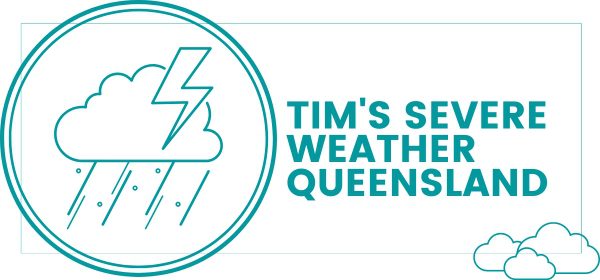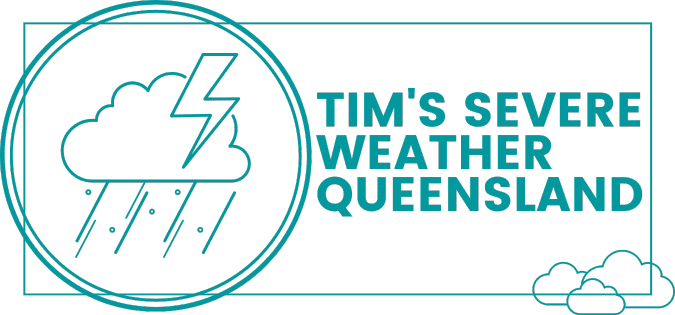Table of Contents
Did you know that Queensland is the most natural disaster impacted state in Australia? With severe storms, floods, cyclones, bushfires, heatwaves, and even threats from tsunamis and earthquakes, Queensland experiences a wide range of extreme weather events. It’s crucial for Queenslanders to understand the impacts of severe weather and be prepared to protect themselves and their property.
Key Takeaways:
- Follow Queensland’s severe weather preparation tips to ensure readiness.
- Learn about the Queensland severe weather emergency plan.
- Stay informed about the steps to stay safe during severe weather in Queensland.
- Take necessary storm safety measures to protect yourself and your property.
- Prepare for cyclones and other extreme weather events specific to Queensland.
Why Severe Weather Preparation is Important in Queensland
Queensland, known for its stunning natural beauty, is also susceptible to frequent natural disasters and extreme weather events. Queenslanders must prioritize severe weather preparation. By taking proactive measures to prepare for severe weather, individuals and communities can minimize the potential impacts on their lives and ensure the safety of their families and properties.
Severe weather events in Queensland can range from destructive storms and floods to cyclones, bushfires, and even the threat of tsunamis and earthquakes. These events can cause significant damage to homes, businesses, infrastructure, and the environment, as well as pose risks to personal safety and well-being.
Being well-prepared for severe weather allows Queenslanders to mitigate potential risks and ensure a quick recovery after the event. It provides individuals with the confidence to navigate through challenging situations, protecting themselves, their families, and their property.
Being prepared means having a clear understanding of the risks associated with Queensland’s weather patterns and natural disasters. This knowledge can help individuals make informed decisions and take appropriate actions to stay safe. It also involves developing a comprehensive emergency plan, packing essential supplies, securing property, staying informed, and being ready to evacuate if necessary.
Severe weather preparedness is not only essential for personal safety but also for the overall resilience of the community. When individuals are well-prepared, it reduces the strain on emergency services and allows them to focus on those in immediate need of assistance.
By investing time and effort into severe weather preparation, Queenslanders can significantly reduce the impacts of natural disasters and extreme weather events. It is a collective responsibility to ensure the safety and well-being of ourselves, our loved ones, and our communities.
Understanding Your Risk
Before preparing for severe weather in Queensland, it is crucial to assess the specific risks you may face based on your location. Queensland is a diverse state with different regions experiencing various weather events, such as floods, cyclones, or bushfires. Understanding your personal risk will enable you to tailor your preparation efforts and implement appropriate measures to protect yourself and your property.
“Knowing your risk is the first step towards effective preparation.”
When assessing your risk, consider the historical weather patterns in your area and the likelihood of specific events occurring. Research local government resources, such as hazard maps or risk assessments, which provide valuable information on the hazards relevant to your location.
Assessing Weather Risks in Queensland
Queensland is prone to a wide range of weather-related hazards, making it essential to assess the risks associated with these events. Here are some key factors to consider when conducting a weather impact assessment:
- Geographical Factors: Queensland’s vast coastal areas are susceptible to cyclones and storm surges, while inland regions are prone to flooding. Factors like proximity to water bodies or low-lying areas can influence the severity of these hazards.
- Climate and Weather Patterns: Investigate the typical weather patterns in your region to anticipate the likelihood of severe storms, heatwaves, or bushfires. Understanding these patterns can help you prepare for seasonal variations and anticipate potential risks.
- Local Infrastructure and Community Vulnerability: Evaluate the resilience of infrastructure, such as roads, bridges, and drainage systems, in your area. Additionally, identify any vulnerable or high-risk populations, such as elderly individuals, people with disabilities, or those with limited access to transportation.
Once you have a clear understanding of the weather risks relevant to your location, you can develop a targeted preparedness plan and implement measures that directly address these specific hazards.
By assessing your personal risk and gaining a comprehensive understanding of the weather hazards in your area, you can proactively prepare for severe weather events in Queensland. The next section will guide you through the process of creating a household emergency plan to enhance your overall preparedness.
Creating a Household Emergency Plan
A household emergency plan is an essential aspect of severe weather preparedness. It involves developing a comprehensive plan that outlines the necessary actions to take and the individuals to contact in the event of severe weather in Queensland. By creating a well-structured emergency plan, you can ensure that everyone in your household knows what to do to stay safe during challenging weather conditions.
One critical component of a household emergency plan is an emergency contact list. Include the names and contact information of family members, neighbors, friends, or emergency services who can provide assistance or support during severe weather events. Having these contacts readily available will facilitate communication and help you stay connected with your support network.
Additionally, your emergency plan should include detailed instructions on evacuation routes. Identify the safest and quickest routes to get to designated evacuation centers or shelters. Plan multiple routes in case the primary option is inaccessible due to road closures or other hazards. Familiarize yourself and your household members with these routes to ensure efficient evacuation if necessary.
A crucial aspect of preparing for severe weather is securing your property to minimize potential damage. Your emergency plan should provide instructions on how to protect your home and belongings. This may involve securing windows and doors, securing loose objects in your yard, or turning off utilities. Include this information in your plan to ensure everyone knows their responsibilities when securing the property.
Remember, the effectiveness of a household emergency plan relies on communication, practice, and regular updates. Schedule regular drills and discussions with your household members to ensure everyone understands their roles and responsibilities. Regularly review and update your emergency plan to reflect any changes in contact information or evacuation routes.
By creating a comprehensive household emergency plan, you are taking a proactive step in protecting yourself and your loved ones during severe weather events in Queensland.
Example Household Emergency Plan
Packing an Emergency Kit
When it comes to severe weather preparedness, having an emergency kit is absolutely essential. Your emergency kit should contain all the necessary supplies to sustain you and your family during extreme weather events. Be sure to include the following items:
- Non-perishable food: Pack at least three days’ worth of non-perishable food items. Choose easy-to-open canned goods, protein bars, and dried fruits.
- Water: Store one gallon of water per person per day to ensure an adequate supply for drinking and sanitation purposes.
- Batteries and flashlights: Keep a supply of extra batteries for flashlights or battery-powered lanterns.
- First aid kit: Include basic medical supplies such as bandages, antiseptic ointment, pain relievers, and any necessary prescription medications.
- Important documents: Keep copies of important documents such as identification cards, insurance policies, medical records, and contact information.
Remember to regularly check and update your emergency kit to ensure that all items are in working order and up-to-date. Deteriorated or expired items should be replaced promptly. Storing your emergency kit in a designated, easily accessible location will help you locate it quickly during times of need.
“Preparing an emergency kit in advance can provide peace of mind and ensure that you have the essential supplies to weather the storm,” says Melissa Wright, a safety expert at Queensland Emergency Services.
By packing an emergency kit, you are taking a proactive step in ensuring your safety and well-being during severe weather events. Being prepared with the necessary supplies will help you and your family navigate any unexpected challenges that may arise.
Protecting Your Property
In the face of severe weather, your home and property are vulnerable to potential damage. By taking proactive measures to protect your property, you can minimize the risks and ensure the safety of your loved ones. Here are some essential steps you can take to safeguard your property during storms and other severe weather events:
1. Trim Tree Branches:
Overhanging tree branches pose a significant risk during severe weather, as they can break off and cause damage to your home or power lines. Regularly inspect your property for any overgrown or weak branches, and trim them back to prevent potential hazards.
2. Secure Loose Items:
Strong winds can easily turn loose items, such as patio furniture and garden tools, into dangerous projectiles. Anchor or secure these items to prevent them from causing damage to your property or neighboring homes during severe weather conditions.
3. Clear Gutters and Downpipes:
Blocked gutters and downpipes can lead to water buildup, which may result in flooding or damage to your home’s foundation. Regularly clean your gutters and ensure downpipes are clear of debris to prevent water from backing up during severe weather.
4. Adequate Insurance Coverage:
Review your home insurance policy to ensure it provides adequate coverage for severe weather events. Consider additions such as flood or storm insurance to protect your property against specific risks. Regularly update your policy to reflect any changes or improvements in your property.
By implementing these property safety measures, you can significantly reduce the potential damage and protect your home during severe weather events.
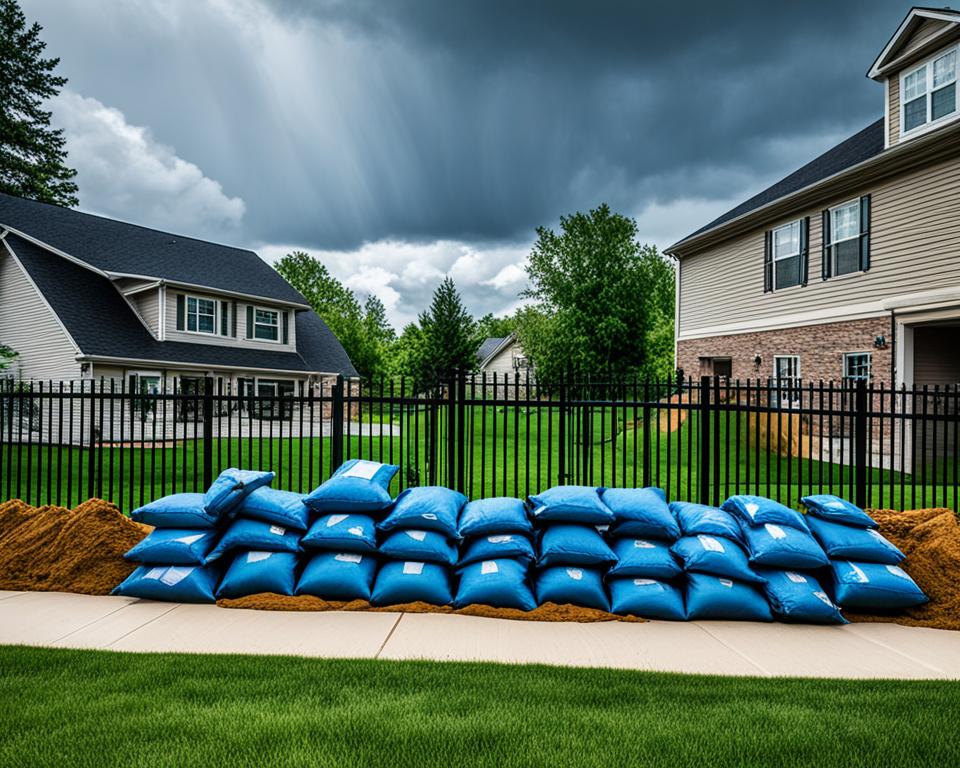
“Taking proactive measures to protect your property during severe weather can save you from extensive damage and costly repairs.” – John Smith, Property Safety Expert
Staying Informed
During severe weather events in Queensland, it is crucial to stay informed and updated on the latest weather conditions and emergency alerts. By having access to accurate and timely information, you can make informed decisions to protect yourself, your loved ones, and your property.
Multiple Sources of Information
Ensure you have multiple reliable sources of information to stay updated on Queensland weather updates and emergency alerts. The following sources can provide valuable updates:
- The Bureau of Meteorology (BOM): The BOM is the official source of weather forecasts, warnings, and information for Queensland. Visit their website or download their mobile app for real-time updates.
- Local Emergency Services: Stay connected with local emergency services, such as the Queensland Fire and Emergency Services (QFES), for localized weather alerts and emergency updates.
- News and Media Outlets: Stay tuned to local news channels, radio stations, and reputable news websites for weather updates and emergency information.
Changes in Weather Conditions
Weather conditions can change rapidly during severe weather events. Pay close attention to any updates or warnings issued by the relevant authorities. Be prepared to take immediate action based on changing weather conditions to ensure your safety.
For example, if a severe storm is approaching, monitor updates regarding the storm’s intensity, track, and potential impacts. This information will help you assess the level of risk and make informed decisions regarding evacuation or sheltering.
Evacuation Notices
During severe weather events, authorities may issue evacuation notices for certain areas deemed at high risk. Stay informed about any evacuation orders or recommendations in your area. Follow the instructions provided by emergency services, and evacuate promptly if required.
“Being well-informed during severe weather can make a significant difference in your safety and preparedness. Stay connected to multiple sources of information and pay attention to changes in weather conditions and any evacuation notices.” – Queensland Emergency Services
By staying informed about Queensland weather updates and emergency alerts, you can stay one step ahead of severe weather events and take necessary precautions to protect yourself and your community. Remember, staying informed is a crucial part of your overall severe weather preparedness plan.
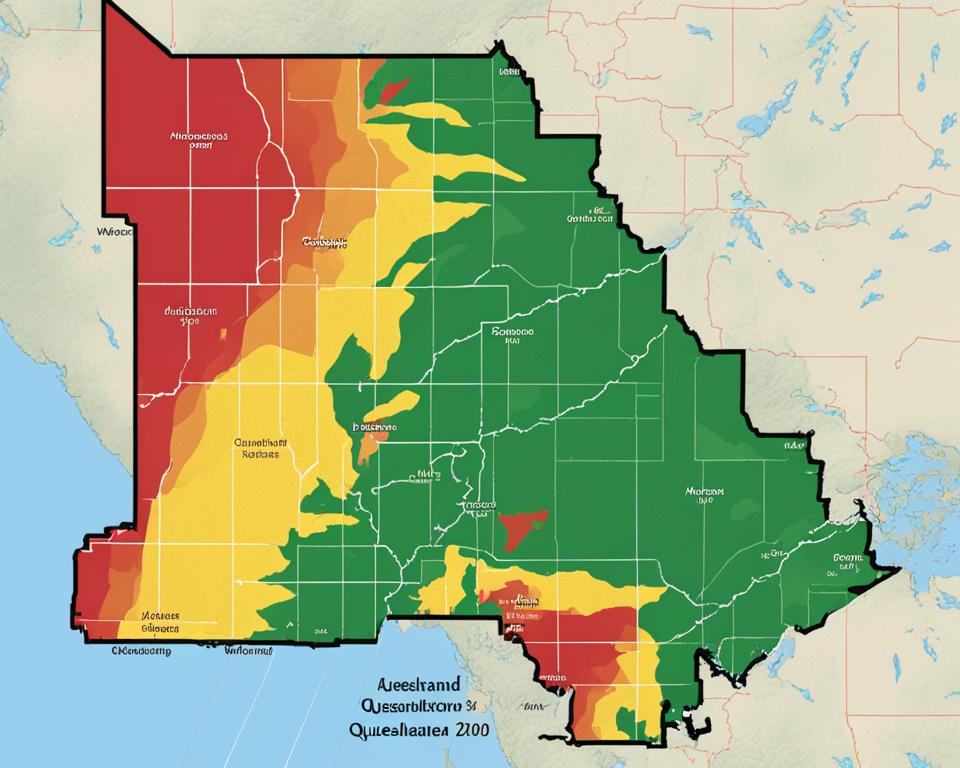
Evacuation Planning
In certain severe weather events, evacuation may be necessary for your safety. It is important to plan ahead and familiarize yourself with evacuation procedures, routes, and nearby emergency shelters. Include these details in your household emergency plan, so you know what steps to take if an evacuation order is issued.
Understanding Evacuation Procedures
Evacuation procedures are essential in ensuring a safe and organized evacuation process. Familiarize yourself with the evacuation protocols outlined by local authorities and emergency services. This may include knowing the designated evacuation routes, assembly points, and transportation arrangements if necessary.
Make sure to understand the different levels of evacuation orders and their corresponding actions. Some evacuations may be voluntary, while others may be mandatory. Stay informed through reliable sources such as local government websites and emergency broadcasts for up-to-date information on evacuation procedures.
Mapping Queensland Evacuation Routes
Knowing the evacuation routes in your area is crucial for a smooth and efficient evacuation process. Consult resources provided by your local government or emergency services to identify the designated evacuation routes in your region. These routes are carefully planned to ensure the safest and fastest journey to designated emergency shelters or safe zones.
Consider preparing a map or marking the evacuation routes on your household emergency plan for easy reference during stressful situations. Include alternative routes in case primary routes are blocked or unavailable. Being familiar with the evacuation routes beforehand will help you navigate to safety more effectively.
Locating Emergency Shelters
Emergency shelters provide a safe haven for individuals and families during severe weather events. Research and identify the nearest emergency shelters in your area or along your designated evacuation routes. These shelters are equipped to provide temporary accommodation, food, and other essential services during emergencies.
Consult local government websites or contact emergency services to obtain information on the locations and capacities of emergency shelters. It is important to note that not all emergency shelters may be suitable for all situations, such as when specific requirements or medical conditions need to be accommodated. Plan accordingly and determine the most appropriate shelter option in your household emergency plan.
Sample Evacuation Plan
Household Evacuation Plan
Evacuation Procedures Evacuation Routes Emergency Shelters 1. Follow evacuation orders issued by local authorities. 1. Main Street, turn left on Smith Avenue. 1. Community Center – Capacity: 200 2. Gather essential items: emergency kit, important documents, clothing, etc. 2. Smith Avenue, turn right on Oak Street. 2. High School Gym – Capacity: 300 3. Secure your property: close windows, lock doors, turn off utilities. 3. Oak Street, turn left on Elm Road. 3. Sports Complex – Capacity: 400 4. Follow designated evacuation routes displayed on road signs. 4. Elm Road, turn right on Pine Avenue. 4. Convention Center – Capacity: 500 Note: The above sample plan is for illustrative purposes only. Please adapt it to your specific circumstances and seek official guidelines from local authorities.
Having a well-prepared evacuation plan will help you navigate the challenges that severe weather events may bring. Ensure that all members of your household understand the plan and know their roles and responsibilities. Review and update your plan regularly, especially if there are changes in evacuation procedures, routes, or emergency shelters in your area.

Caring for Pets during Severe Weather
Pets are an integral part of our families, and it is crucial to ensure their safety during severe weather events. Including pets in our emergency preparations is essential to protect their well-being. By creating a pet emergency plan, you can provide for their needs and minimize potential risks.
Creating a Pet Emergency Plan
When developing a pet emergency plan, consider the following:
- Food and Water: Store enough pet food and water to last at least three days. Keep these supplies in a waterproof container and regularly check for expiration dates.
- Medications: If your pet requires medications, ensure you have an ample supply readily available in your emergency kit.
- Identification: Make sure your pet is properly identified with a collar and tags that include your contact information. Consider microchipping your pet as an added layer of identification.
- Secure Shelter: Identify a safe area within your home where you can take shelter with your pet during severe weather. This space should be away from windows and potential hazards.
Remember to periodically review and update your pet emergency plan to accommodate any changes in your pet’s needs or circumstances.
Pet-Friendly Evacuation Options
In the event of an evacuation, it’s crucial to identify pet-friendly evacuation options beforehand. Research hotels, shelters, or friends and family who can accommodate you and your pets during an emergency. Ensure you have contact information and directions readily available in your emergency plan.

Remember, some evacuation shelters may require proof of vaccinations and specific documents for your pets, so it’s important to have these readily accessible in your emergency kit.
“Including pets in your severe weather preparations is not just a responsibility, but a reflection of the love and care we have for our furry family members. By developing a pet emergency plan, you can ensure their safety and well-being during severe weather events.”
Assisting Vulnerable Individuals
During severe weather events, vulnerable individuals, such as the elderly, disabled, or those with medical conditions, require extra support and assistance. It is crucial for the Queensland community to come together and provide a helping hand to ensure the safety and well-being of these individuals.
One way to support vulnerable individuals is by reaching out to local community assistance programs. These programs are specifically designed to meet the unique needs of those who may be more susceptible to the effects of severe weather. By connecting with these programs, you can help ensure that the necessary resources and aid are available to those who require them the most.
Offering your support and assistance to the vulnerable individuals in your community can make a significant difference in their ability to navigate through severe weather events. Whether it’s checking in on them, providing transportation to a safe location, or helping with the preparation of their emergency supplies, even small gestures can have a profound impact.
In addition to community assistance programs, it’s essential to raise awareness about the needs of vulnerable individuals during severe weather. By encouraging open dialogue and promoting inclusive disaster planning, we can create a more resilient and supportive community that leaves no one behind.
Remember, just like any other member of the community, vulnerable individuals have the right to safety, security, and assistance during severe weather events. Let’s work together to ensure that no one is left behind and that everyone is given the care and support they need.
With the support of the Queensland community, we can make a difference in the lives of vulnerable individuals during severe weather events.
Community Assistance Programs
| Program Name | Services Offered | Contact Information |
|---|---|---|
| Queensland Community Services | Emergency accommodation, food assistance, medical support | Phone: 1800 000 000 Email: info@qldcommunityservices.com.au |
| Helping Hands Outreach | Transportation, home visits, social support | Phone: 1800 111 111 Email: outreach@helpinghands.org |
| CareConnect Queensland | In-home care, medication assistance, daily check-ins | Phone: 1800 222 222 Email: careconnect@careqld.com |
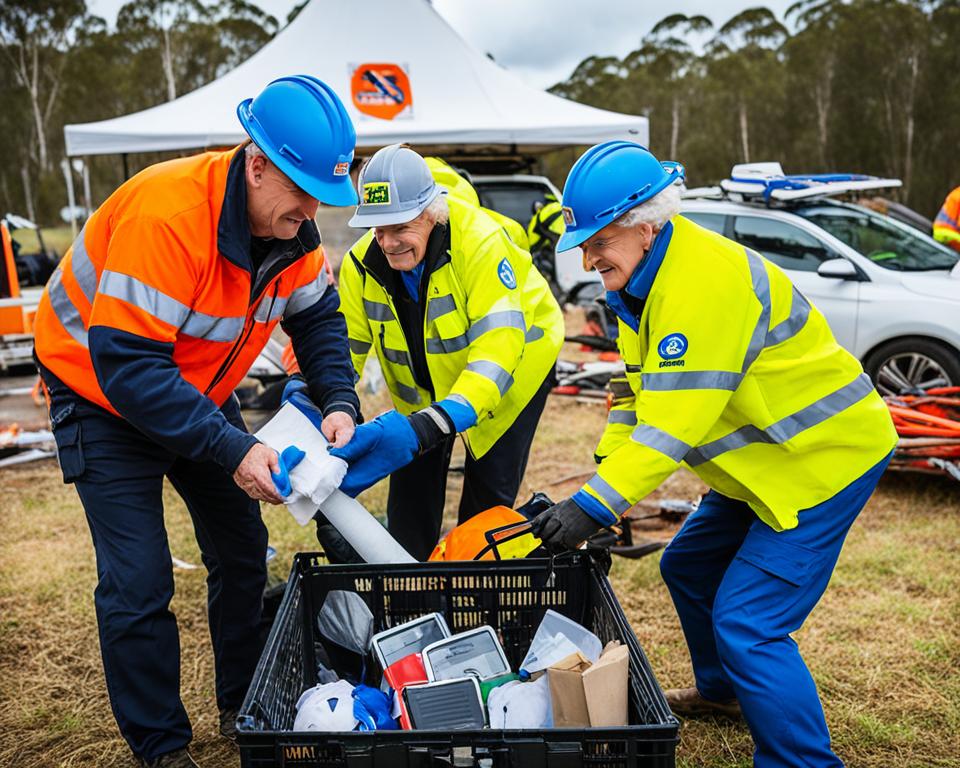
Business and Workplace Preparedness
Severe weather events can have a significant impact on businesses and workplaces in Queensland. To ensure the safety of employees and protect valuable assets, it is imperative for employers to have comprehensive emergency plans in place.
A business continuity plan is a crucial component of preparedness. This plan outlines procedures and protocols to be followed during severe weather events, ensuring the smooth operation of essential business functions and minimizing potential disruptions. By identifying possible risks and vulnerabilities specific to the location and nature of the business, organizations can develop strategies to mitigate these risks and protect their operations.
Moreover, having adequate insurance coverage is vital to safeguard businesses during severe weather events. This includes property insurance, business interruption insurance, and coverage for any potential damage or loss caused by severe weather. Reviewing and updating insurance policies regularly is essential to ensure continued protection.
Employers also have a responsibility to keep their employees informed and safe during severe weather. Clear communication channels and protocols should be established to relay important updates and instructions. This helps employees stay informed about any potential risks and take appropriate actions to ensure their safety.
Workplace Emergency Plans
A workplace emergency plan is a comprehensive document that outlines procedures to be followed in case of severe weather events or any other emergencies. This plan should include:
- Emergency contacts: A list of phone numbers and contact information for emergency services, local authorities, and relevant organizations.
- Evacuation procedures: Clear instructions and designated evacuation routes to be followed during severe weather or other emergencies.
- Designated assembly areas: Safe locations where employees should gather after evacuating the building.
- Emergency supplies: Adequate provisions of essential items such as first aid kits, emergency lighting, and communication equipment.
- Roles and responsibilities: Clearly defined roles for employees during emergencies, ensuring accountability and an organized response.
Regular drills and exercises should be conducted to familiarize employees with the emergency procedures and ensure they are well-prepared to respond in a timely and efficient manner. Additionally, it is vital to review and update the workplace emergency plan periodically to account for any changes in the business structure or operations.
“Protecting your business during severe weather events is not just about safeguarding property and assets. It is also about ensuring the well-being of your employees and maintaining business continuity. By having a thorough emergency plan in place, you can minimize disruption, protect your business, and support your employees through challenging times.” – John Smith, CEO of XYZ Corporation
Remember, being prepared is the key to minimizing the impact of severe weather events on businesses and workplaces. By investing time and effort into creating and implementing robust emergency plans, businesses can protect their employees, assets, and reputation.
| Benefits of Workplace Emergency Plans | Steps to Develop an Effective Plan |
|---|---|
| 1. Ensures employee safety during severe weather events. | 1. Identify potential risks and vulnerabilities specific to the workplace. |
| 2. Protects valuable assets and minimizes potential damage. | 2. Develop strategies and protocols to mitigate identified risks. |
| 3. Facilitates a quick recovery and minimizes disruptions to business operations. | 3. Establish clear communication channels and protocols for relaying information. |
| 4. Demonstrates a commitment to employee well-being and safety. | 4. Conduct regular drills and exercises to familiarize employees with emergency procedures. |
By prioritizing business and workplace preparedness, Queensland businesses can effectively protect themselves, their employees, and their operations from the potential impacts of severe weather events.
Education and Training
Educating yourself and participating in training programs is crucial when it comes to preparing for severe weather events in Queensland. By taking advantage of the resources and knowledge provided by local authorities and community organizations, you can learn about Queensland’s severe weather patterns and develop the necessary skills to respond effectively.
Attending training sessions and workshops focused on emergency preparedness will not only enhance your understanding of severe weather risks but also equip you with practical tools and strategies to navigate challenging situations. By investing time and effort in education and training, you can become a valuable asset in your community during times of crisis.
| Benefits of Education and Training | How to Get Educated and Trained |
|---|---|
|
|
Post-Event Recovery
Recovering from a severe weather event can be a challenging and lengthy process. The impact of severe weather events in Queensland can be significant, leaving behind a trail of destruction and requiring substantial efforts to rebuild and restore affected areas.
After the immediate danger has passed, it is crucial to begin the process of post-event recovery. This involves a series of steps to assess the damage, liaise with insurance providers, and access available support programs to facilitate the rebuilding process.
Assessing Damage
The first step in post-event recovery is assessing the extent of the damage caused by the severe weather event. This includes evaluating the structural integrity of buildings, infrastructure, and assessing the impact on natural resources.
Consulting with professional assessors and experts can help accurately determine the scope of the damage and develop a comprehensive plan for restoration and rebuilding efforts.
Contacting Insurance Providers
Once the damage has been assessed, it is essential to contact your insurance provider to initiate the claims process. Documenting the damage through photographs and detailed descriptions can help strengthen your insurance claim.
Review your insurance policy to understand the coverage and the required steps for filing a claim. Keep in mind that it is essential to notify your insurance provider promptly to ensure a smoother process.
Accessing Support Programs
Queensland offers various support programs and resources to assist individuals, businesses, and communities in the post-disaster recovery process. These programs provide financial aid, counseling services, and guidance to help accelerate the rebuilding efforts.
Reach out to local government agencies, community organizations, and support networks to access the available programs and resources. These initiatives can provide invaluable assistance during the recovery journey.
Throughout the post-event recovery process, it is crucial to remain patient and focused. Rebuilding after severe weather events takes time and perseverance. Seeking assistance from experts, staying informed, and accessing the available support can help ease the challenges associated with recovery and contribute to a successful rebuilding process.
| Steps in Post-Event Recovery | Actions |
|---|---|
| Assess Damage | Consult professionals to evaluate and document the extent of the damage. |
| Contact Insurance Provider | Notify your insurance company promptly and initiate the claims process. |
| Access Support Programs | Seek resources and assistance from local government agencies and community organizations. |
Community Support and Resources
During severe weather events in Queensland, the power of community support shines through. Local communities rally together to provide assistance and resources to those affected by the severe weather. It is crucial to familiarize yourself with the various community support programs and organizations that offer help during and after these events, ensuring that no one is left without assistance.
These community support programs can provide essential resources such as food, shelter, clothing, and other basic necessities to those in need. They play a vital role in helping affected individuals and families get back on their feet after severe weather events.
By reaching out to these community programs, you not only offer your support but also connect with a network of like-minded individuals who are passionate about helping others. Together, you can work towards building stronger and more resilient communities.
“Alone we can do so little; together we can do so much.” – Helen Keller
Remember, it is essential to be aware of the local community support programs and organizations available in your area. By partnering with them, you can make a significant difference in the lives of those affected by severe weather events.
Severe Weather Assistance Programs
Below are some notable severe weather assistance programs and organizations that offer support to Queensland communities:
| Organization | Services Offered | Contact Information |
|---|---|---|
| Queensland Disaster Management | Emergency relief assistance, support services | Website: www.disaster.qld.gov.au Phone: 1300 993 191 |
| Red Cross Australia | Emergency relief, shelter, emotional support | Website: www.redcross.org.au Phone: 1800 733 276 |
| Salvation Army | Emergency assistance, shelter, food, clothing | Website: www.salvationarmy.org.au Phone: 1300 371 288 |
| St. Vincent de Paul Society | Emergency relief, financial assistance, support services | Website: www.vinnies.org.au Phone: 13 18 12 |
These organizations work tirelessly to provide immediate assistance to those affected by severe weather events and help them recover and rebuild their lives. Whether through monetary donations, volunteering, or offering your time and skills, any support you provide will make a meaningful impact.
Together, let’s stand strong and support our communities during and after severe weather events in Queensland.
Regular Preparedness Reviews
Preparedness for severe weather in Queensland is an ongoing process that requires regular reviews and updates to ensure your safety and the well-being of your loved ones. By staying proactive and diligent, you can maintain a state of readiness for any potential emergencies that may arise. Here are a few important steps to follow when conducting your regular preparedness reviews:
Review Your Household Emergency Plan
Take the time to carefully review your household emergency plan on a regular basis. This plan should outline the necessary steps to take and the people to contact in the event of severe weather. Ensure that all contact information is up to date and that everyone in your household is familiar with the plan.
Check and Update Your Emergency Kit
Your emergency kit is a crucial resource during severe weather events. Regularly check your kit to ensure that all items are in good condition and not expired. Replace any expired food, water, medications, batteries, or other perishable items. Additionally, consider any changes in your family’s needs and adjust your emergency kit accordingly.
Stay Informed About Changes in Weather Patterns
Weather patterns can change, and new safety guidelines may be issued to protect the public during severe weather events. Stay up to date with the latest information by regularly monitoring weather forecasts, following official channels such as the Bureau of Meteorology, and staying connected with local emergency services.
“Regular reviews of your emergency plan and kit are essential to ensure your level of preparedness remains high. By staying informed and updating your resources, you can face severe weather events with confidence and peace of mind.”
Remember, being prepared for severe weather in Queensland is not a one-time effort. It requires ongoing vigilance and adjustments to stay ready. By conducting regular preparedness reviews, you can stay one step ahead and better protect yourself, your loved ones, and your property when faced with severe weather emergencies.
Conclusion
Severe weather preparedness conclusion: Queensland safety measures are crucial for protecting yourself, your family, and your property during extreme weather events. Understanding the risks specific to your location, creating a household emergency plan, and packing an emergency kit are vital steps to stay safe. Stay informed about weather updates and evacuation procedures to make well-informed decisions, and prioritize the needs of vulnerable individuals in your community. Regularly review and update your preparedness efforts to ensure you are always ready for any severe weather that may occur.
FAQ
Why should I prepare for severe weather in Queensland?
Severe weather in Queensland can have significant impacts on lives and property. Being prepared helps minimize the risks and ensures your safety during extreme weather events.
How do I assess my personal risk for severe weather in Queensland?
Understanding the specific risks based on your location in Queensland is crucial. Stay informed about the weather patterns in your region and assess the likelihood of experiencing floods, cyclones, or bushfires.
What should be included in a household emergency plan?
A household emergency plan should include an emergency contact list, evacuation routes, and instructions for securing your property. It ensures that everyone in your household knows what to do during severe weather events.
What should I include in my emergency kit for severe weather in Queensland?
Your emergency kit should include non-perishable food, water, batteries, flashlights, a first aid kit, and important documents. Regularly check and update your emergency kit to ensure it has all the necessary supplies.
How can I protect my property during severe weather in Queensland?
To protect your property, trim tree branches, secure loose items, clear gutters and downpipes, and ensure you have adequate insurance coverage. These measures can minimize the risk of damage.
How can I stay informed during severe weather events in Queensland?
Stay updated with the latest weather updates and emergency alerts from reliable sources such as the Bureau of Meteorology and local emergency services. Ensure you have multiple sources of information.
How should I plan for evacuation during severe weather in Queensland?
Familiarize yourself with evacuation procedures, routes, and nearby emergency shelters. Include these details in your household emergency plan so you know what steps to take if an evacuation order is issued.
How can I ensure the safety of my pets during severe weather in Queensland?
Create a pet emergency plan that includes provisions for their needs such as food, water, medications, and a secure shelter. Identify pet-friendly evacuation options and ensure they are properly identified with collars and tags.
How can I support vulnerable individuals during severe weather events in Queensland?
Reach out to local community assistance programs to ensure the needs of vulnerable individuals are met. Offer support and assistance to those who may require extra help during severe weather events.
What should businesses do to prepare for severe weather in Queensland?
Businesses should have emergency plans in place, develop a business continuity plan, identify possible risks, and ensure adequate insurance coverage. They should also have protocols to keep employees informed and safe.
How can I educate myself about severe weather in Queensland?
Take advantage of resources provided by local authorities or community organizations to learn about Queensland’s severe weather patterns. Attend training sessions or workshops to improve your knowledge and skills.
What steps are involved in post-event recovery after severe weather in Queensland?
Post-event recovery includes assessing damage, contacting insurance providers, and accessing available support programs. It is important to be patient with the recovery process and seek assistance if needed.
What community support and resources are available during severe weather in Queensland?
Familiarize yourself with local community support programs and organizations that offer assistance during and after severe weather events. They can provide food, shelter, or other essential resources to those in need.
How often should I review and update my severe weather preparedness efforts in Queensland?
Regularly review and update your household emergency plan, check and replace expired items in your emergency kit, and stay informed about changes in weather patterns or new safety guidelines. Being proactive with regular reviews will help ensure you are always prepared.
Why is being prepared for severe weather important in Queensland?
Being prepared for severe weather in Queensland is essential to safeguard your well-being, your family’s safety, and your property. By taking proactive measures, you can minimize risks and stay safe during severe weather events.
Source Links
- Take Steps to Get Ready – Queensland Government
- 3 Steps to Get Ready – Get Ready Queensland
- Preparing for Severe Weather – Maritime Safety Queensland
